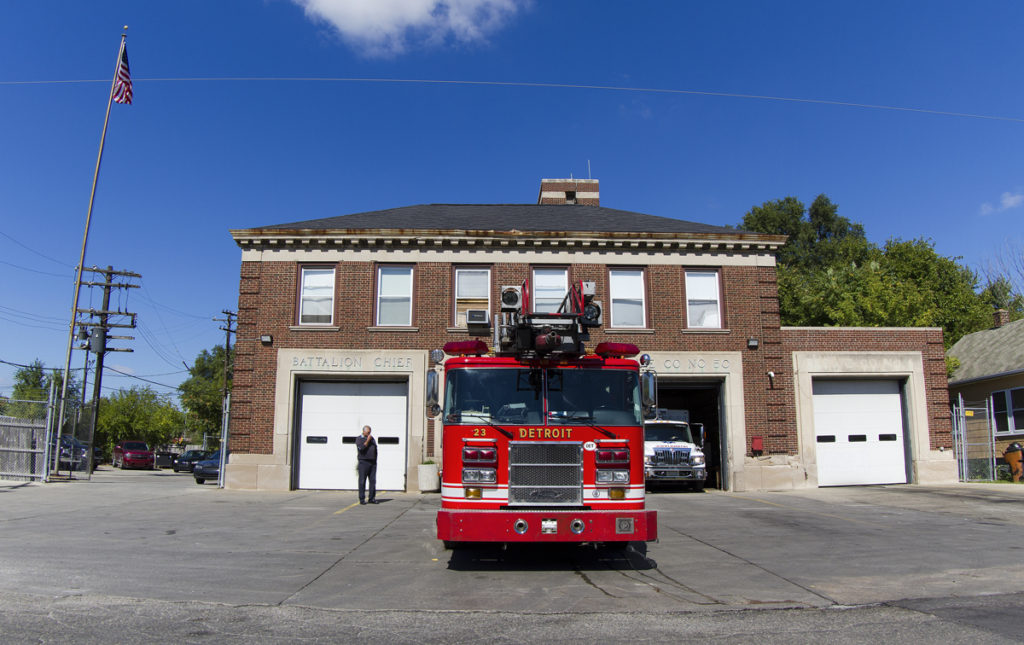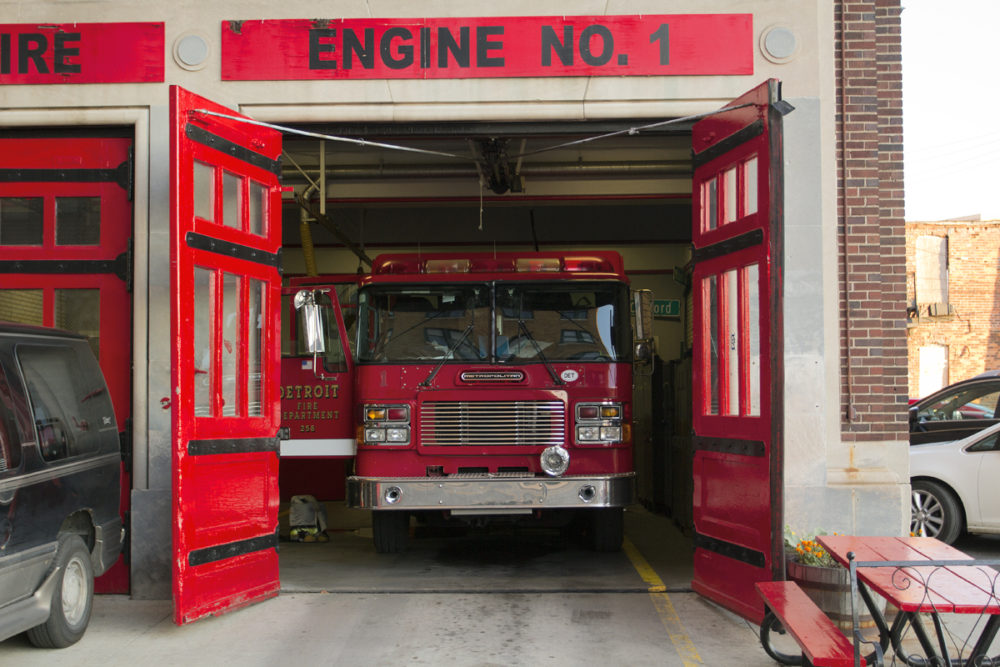
Some of the most hazardous buildings in Detroit are the city’s 40 firehouses.
Recent city inspections found that firefighters and paramedics are forced to live in stations riddled with exposed asbestos and mold, leaking roofs, lead paint, electrical hazards, backed-up raw sewage, noxious gases, malfunctioning fire alarms and broken windows.
The long-neglected problems are so serious and widespread that most of the firehouses are in violation of federal safety standards and pose significant risks to more than 1,000 firefighters and medics.
Despite safeguards for whistleblowers, at least one firefighter has been disciplined this year for launching a complaint with the Michigan Occupational Safety and Health Administration (OSHA), the agency responsible for investigating and shutting down hazardous buildings.
“The sewage can smell so bad that we lose our appetites,” one firefighter told Motor City Muckraker, speaking on condition of anonymity because Mayor Mike Duggan’s administration has threatened all Fire Department employees with discipline for speaking to us. “It’s disgusting. There’s no other way to explain it.”

But help is finally on the way, according to Duggan’s office. Using money from a bankruptcy loan, the city conducted the inspections and is beginning to correct the violations by removing asbestos and mold, fixing roofs and broken toilets and addressing dozens of other problems.
“The General Services Department, which is taking over all aspects of maintenance and repair at firehouses, spent six weeks conducting this study specifically to identify the issues that need addressing and it has developed a plan it is preparing to implement,” mayoral spokesman J0hn Roach told us. “GSD is in the process of identifying contractors to do much of the work, including lead paint and asbestos abatement.”
But the timeline and costs for repairs aren’t yet known. Duggan’s office said it would disclose the amount of money available to correct the problems later today.

Roach added that Mayor Duggan is removing the fire administration entirely from the process of fixing problems within the firehouses and pledged to correct emergencies quickly.
“For the first time, firefighters will be able to report problems at the firehouse directly to the General Services Department, instead of having to go through the fire department chain of command,” Roach said.
buy cipro online https://blackmenheal.org/wp-content/languages/new/us/cipro.html no prescription
“Issues that are of an emergency nature will responded to within 24 hours and non-emergencies within 48 hours.”
A sharply critical report on the Fire Department in March accused the city of ignoring hazardous conditions for years, creating a feeling of helplessness and “complacency” among firefighters.
“Many employees have reported hazards and problems but observed the absence of repairs,” wrote Tri-Data, a group of consultants specializing in public safety reforms. “It is important to note many hazards can be remedied without a great amount of investment, and in many cases correction just requires attentive supervisors and employees.”

Executive Fire Commissioner Edsel Jenkins, who disciplined a firefighter for blowing the whistle on the hazardous conditions, didn’t respond for comment.
During the firehouse inspections in June and July, the city found alarming violations, including asbestos in 14 fire stations. Asbestos, which can cause lung cancer and mesothelioma, among other serious diseases, was discovered in kitchens, sleeping quarters, bathrooms, pipes, storage areas, basements and garages. Firefighters are still required to live and work in those areas.
The discovery of mold prompted the fire administration to close one fire station – Ladder 14 – after it was reported by the news media. But at four other firehouses, the mold is growing on walls and pipe insulation without any recourse for firefighters, whose health insurance coverage was severely reduced during the bankruptcy process.
On average, more than 20 hazards were found in each firehouse.
 At Engine 50, where two fire companies and a chief are stationed, sewer gas was found spewing into the building. Other problems at the city’s busiest fire station, which was featured in the award-winning documentary “Burn,” include asbestos, broken windows and doors, cracked floors, leaking pipes, clogged sewer drains and fire hazards.
At Engine 50, where two fire companies and a chief are stationed, sewer gas was found spewing into the building. Other problems at the city’s busiest fire station, which was featured in the award-winning documentary “Burn,” include asbestos, broken windows and doors, cracked floors, leaking pipes, clogged sewer drains and fire hazards.
HAZMAT crews, which are called to clean up hazardous materials, has many of its own problems, including mold, asbestos and malfunctioning toilets.
Despite the long-neglected problems, OSHA, which is responsible for overseeing firehouse safety, has done nothing to address the hazards and has largely ignored the Fire Department.
“What’s most frightening about this is not knowing if I’m going to get cancer from breathing asbestos” for years, one firefighter told us. “My wife wants me to find another job. I have a daughter, and I want to see her grow up.”
Steve Neavling
Steve Neavling lives and works in Detroit as an investigative journalist. His stories have uncovered corruption, led to arrests and reforms and prompted FBI investigations.

5 Responses to "Records: Detroit firehouses riddled with asbestos, mold, lead paint & fire hazards"